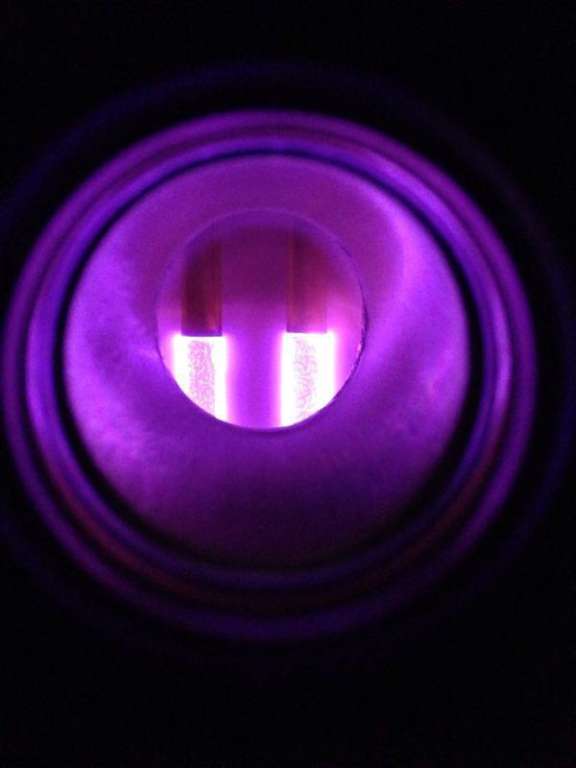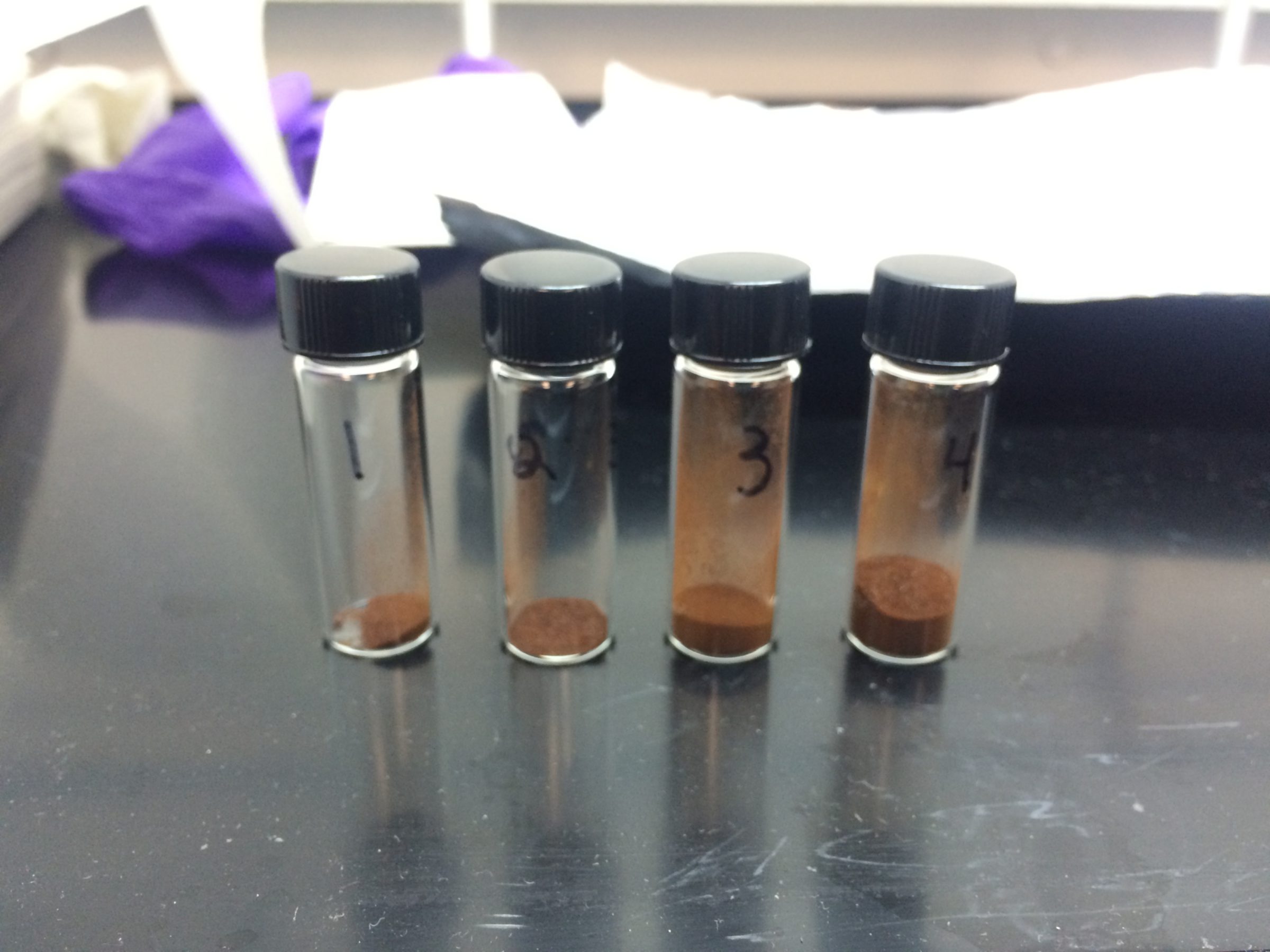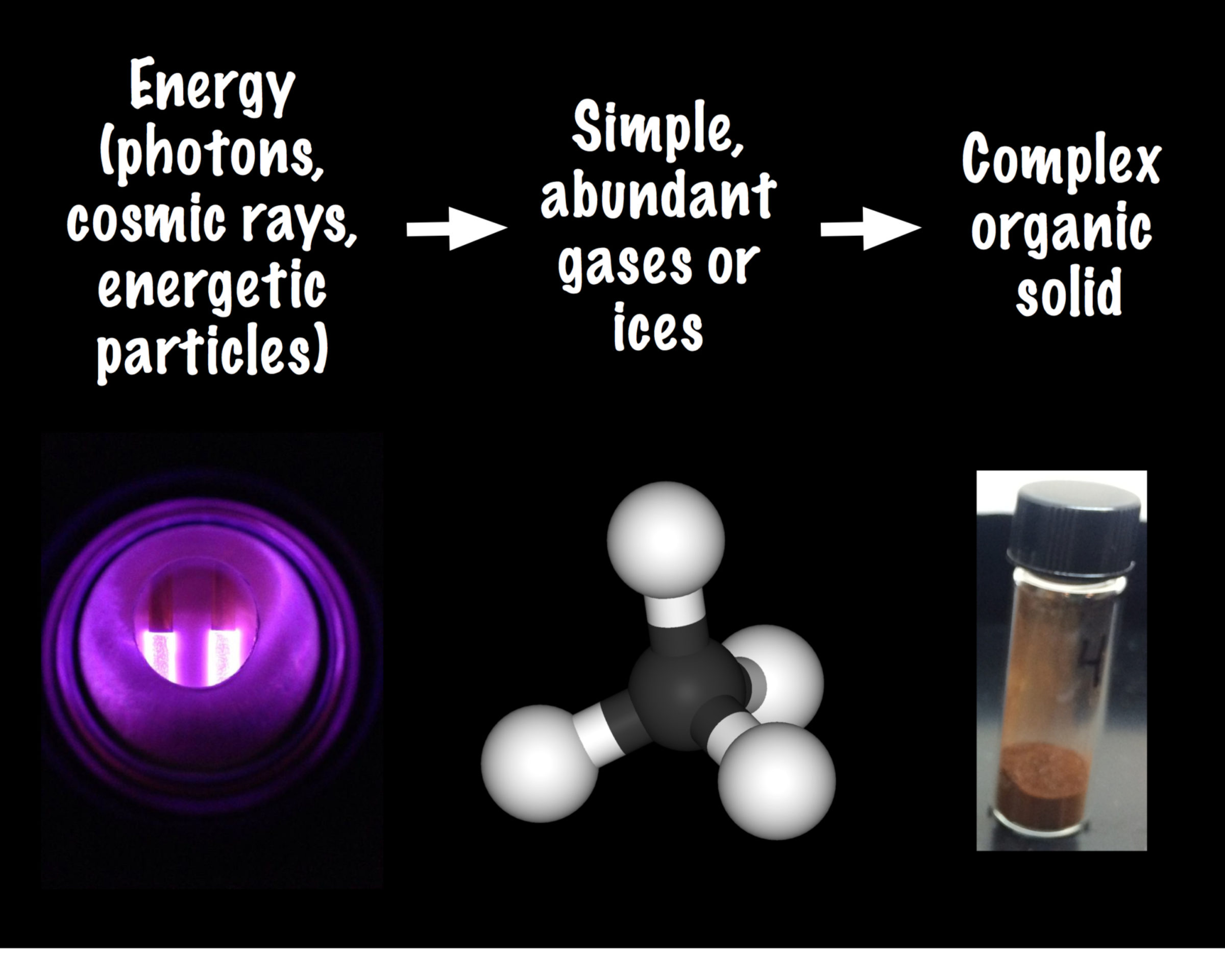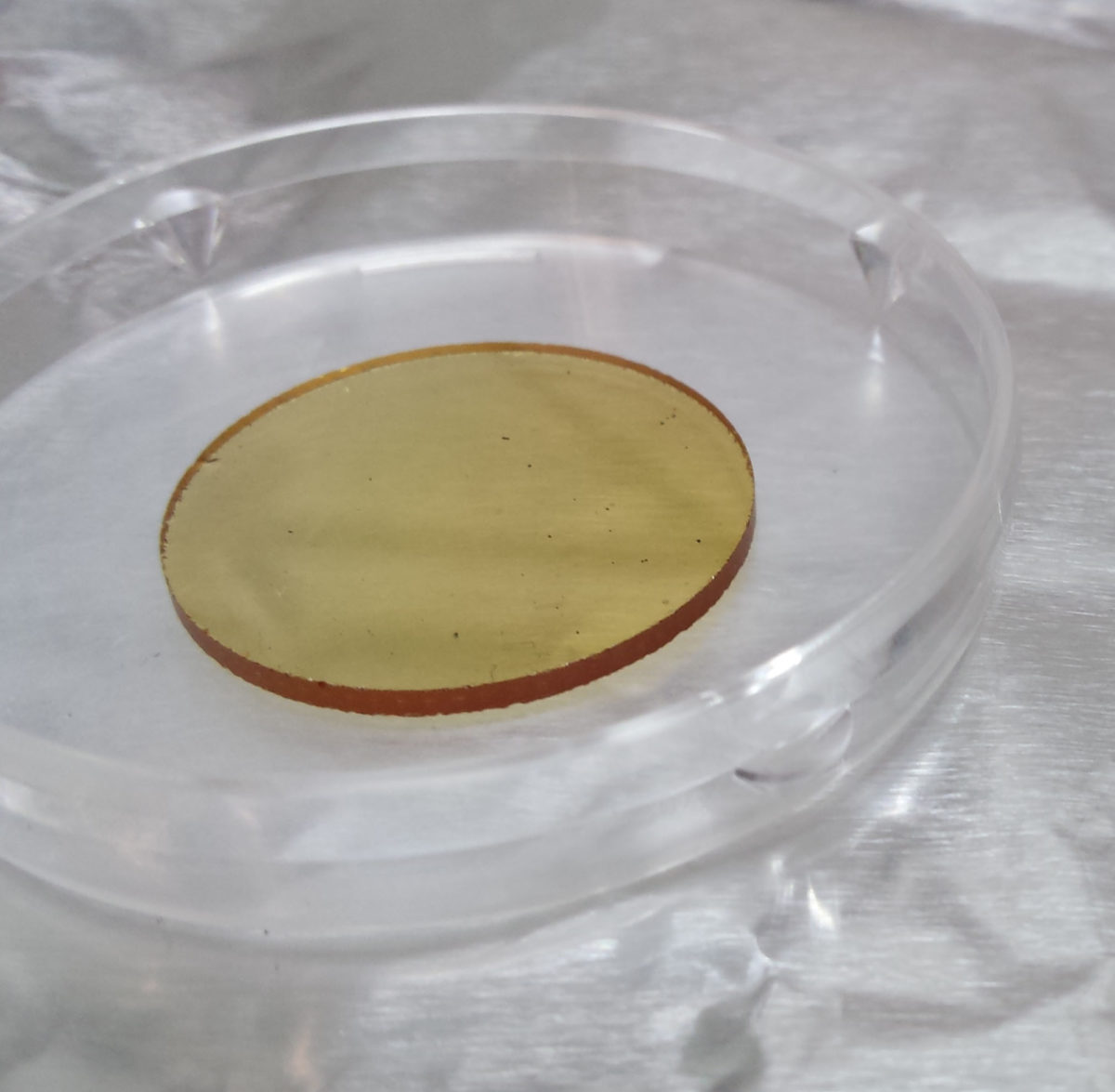Sarah Hörst • Jul 22, 2015
What in the world(s) are tholins?
As New Horizons beamed back incredible images of Pluto and Charon over the last few weeks, many people learned for the first time that Pluto is red, and we discovered that Charon is strikingly red at the pole. The question “why is Pluto red” has been answered with a word that most people have never heard of, and perhaps even fewer people can actually define—“tholins”.
What in the world(s) are tholins? During the 1970s, Carl Sagan’s laboratory at Cornell was busily taking mixtures of cosmically relevant gases and irradiating them with various energy sources. They were searching for answers to questions ranging from “why is the Great Red Spot red” to “how did life on Earth originate” and in the process produced material for which there was no name. In 1979, Carl Sagan and Bishun Khare published an article titled “Tholins: organic chemistry of interstellar grains and gas” in the journal Nature and the word “tholin” was born.
For the past decade we have been producing in our laboratory a variety of complex organic solids from mixtures of the cosmically abundant gases CH4, C2H6, NH3, H2O, HCHO, and H2S. The product, synthesized by ultraviolet (UV) light or spark discharge, is a brown, sometimes sticky, residue, which has been called, because of its resistance to conventional analytical chemistry, “intractable polymer”. However, we have recently succeeded, through sequential and non-sequential pyrolysis followed by gas chromatography-mass spectrometry (GC-MS) in determining something of the composition of this material. It is clearly not a polymer—a repetition of the same monomeric unit—and some other term is needed. We have discussed this material as a constituent of the Earth’s primitive oceans and therefore as relevant to the origin of life; as a component of red aerosols in the atmospheres of the outer planets and Titan; as present in comets, carbonaceous chondrites, and pre-planetary solar nebulae; and as a major constituent of the interstellar medium, which is the concept discussed here. We propose, as a model-free descriptive term, ‘tholins’ (Gk ϴὸλος, muddy; but also ϴoλòς, vault or dome), although we were tempted by the phrase ‘star-tar’. The properties of tholins will depend on the energy source used and the initial abundances of precursors, but a general physical and chemical similarity among the various tholins is evident.
-Carl Sagan and Bishun Khare, 1979, “Tholins: organic chemistry of interstellar grains and gas”, Nature, Vol 277, 11 January 1979
Although informative, the definition given in the Nature article is not particularly easy to repeat when people ask, “what is tholin?” I have been studying tholin for almost a decade and in my experience the most frequently used synonyms for tholin are “gunk”, “brown gunk”, and “complex organic gunk”. Tholin is also often described as a “tar-like” substance. Words like tar, kerogen, bitumen, petroleum, asphalt, etc. all describe substances that are potentially similar to tholin in some ways. However, these materials all result from life; they are “biotic”.
Since 1979, the definition of tholin has expanded and now often includes organic solids produced from irradiation of cosmically abundant ices (rather than gases), and tholin experiments now routinely include other gases like N2, CO2, or CO. So what do scientists mean whey they say tholin? In general, we mean an abiotic complex organic solid that formed by chemistry from energy input into simple, cosmically relevant gases or solids. Shorter still, “abiotic complex organic gunk” works for me. You can see, perhaps, why Sagan and Khare felt the need to make up a word to capture this idea.

Indeed, tholin turns out to be incredibly chemically complex. Ultra-high-resolution mass spectrometry measurements I analyzed while in graduate school demonstrated that tholin contains at a minimum 10,000 different molecular formulas, which, once you account for different structures (isomers), could mean hundreds of thousands of different compounds! We have detected molecules in tholin with masses equivalent to about 80 carbon atoms, although we know that much heavier ions are present in Titan’s atmosphere!
A final note on nomenclature: one of the biggest difficulties with the word "tholin" is that it is incredibly nonspecific. The best analogy I have been able to come up with is “salad”. Salad, like tholin, is a mixture of a number of different compounds and spans a fairly broad range of materials. Most of us would agree on a case-by-case basis whether or not something is a salad, but the definition is not at all specific and the material itself depends on the starting materials, preparation, temperature, etc. We sometimes refer to “Titan tholin” or “Triton tholin” but even then you would need to ask about temperature, energy source, precursor gas or ice mixture, etc. to get an actual understanding of what the material is. Personally, I try to use the word “tholins” only when describing the laboratory-produced samples, in part because we do not really know yet how similar the material we produce in the lab is to the material found on places like Titan or Triton (or Pluto!). In fact, I usually call the samples produced in my laboratory “Titan aerosol analogues” rather than “tholins.”

More important than the origin and nomenclature discussion is: why do we care about tholin? Here is a not-at-all-comprehensive list:
As particles in an atmosphere, tholin affects the number and kind of photons in an atmosphere and on the surface (because particles absorb and scatter the light from a star differently than gases), which is important for temperature-dependent processes and can affect habitability. For example, a tholin haze on the early Earth may have efficiently screened UV photons, protecting early life forms before the ozone layer existed.
Tholin is a source of organic material on a surface, which could potentially be important for the origin or evolution of life on a world. For example, in 2012 we showed that you can produce some of the building blocks (amino acids—the building blocks of proteins, and nucleobases—the building blocks of DNA/RNA) of life in tholin experiments.
Tholin is a source of material on a surface, period, which can participate in surface processes. For example, the extensive dune fields on Titan appear to be made of organic material like tholin.
The presence or absence of tholin can help us figure out the age of a surface and/or composition of starting materials. For example, on world where tholin forms efficiently, tholin-free regions would have to be relatively young or subject to some type of removal process (rain, wind, resurfacing, etc.).
One final reason we care about tholin is that there are places in the solar system that we want to explore where material similar to laboratory-produced tholin is likely present. We are working to understand tholin so that we know which instrument techniques are most useful for characterizing it, what specifications those instruments need, and finally we can use tholin for instrument testing to ensure that it would work properly once arriving at its destination. You can imagine, for example, that one would want to test cryogenic valves designed to control the flow of Titan lake materials into an instrument with materials analogous to Titan so that your valves do not get clogged or stuck!
As for whether or not there is tholin present on Pluto or Charon, I am not on the team so I am not privy to the data that they have seen. The fact that there is red material present on worlds that possess (or in Charon’s case are exposed to) some known tholin precursors (nitrogen, methane, carbon monoxide) makes a pretty compelling case for the presence of tholin. Spectrometers carried by New Horizons will almost certainly, if they have not already, tell us that the red material is organic and then we will all busily get to work trying to understand its formation (in the atmosphere, on the surface, or both?), composition, geographical distribution, and implications for Pluto’s atmosphere and surface. I can’t wait. :)
Support our core enterprises
Your support powers our mission to explore worlds, find life, and defend Earth. You make all the difference when you make a gift. Give today!
Donate

 Explore Worlds
Explore Worlds Find Life
Find Life Defend Earth
Defend Earth



